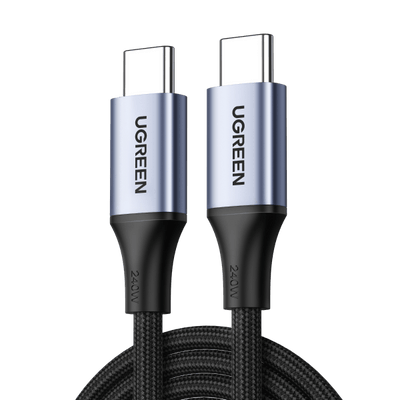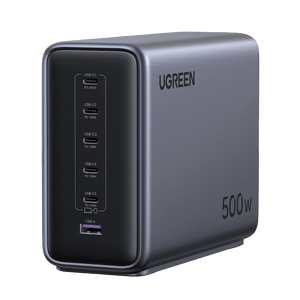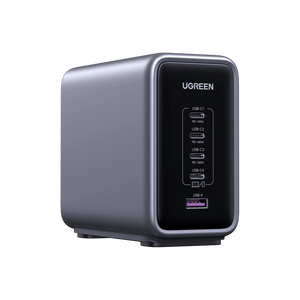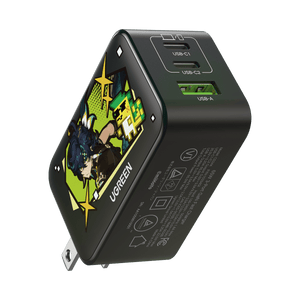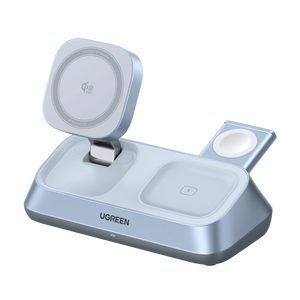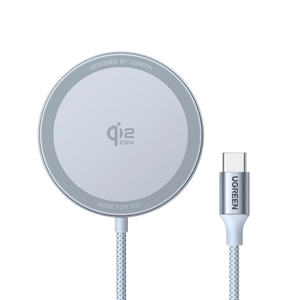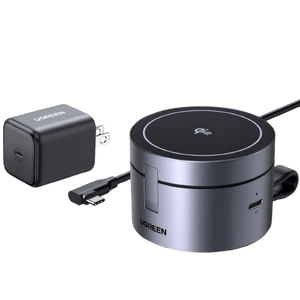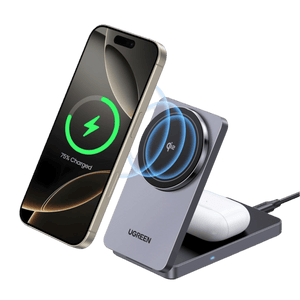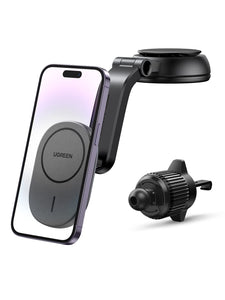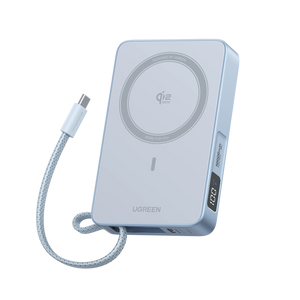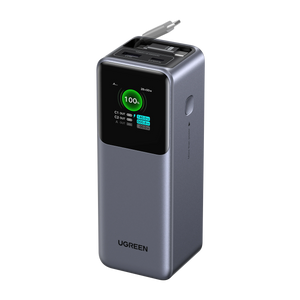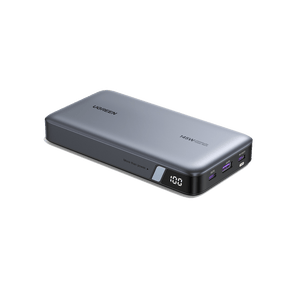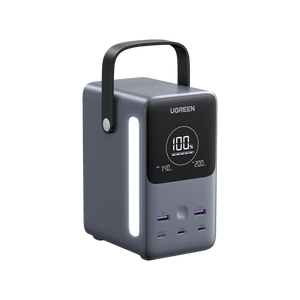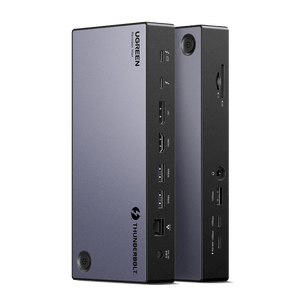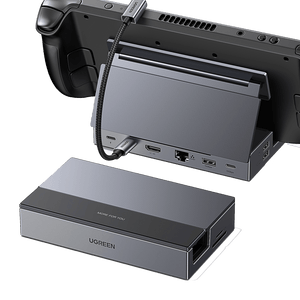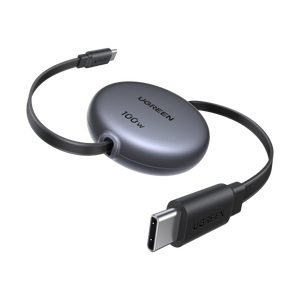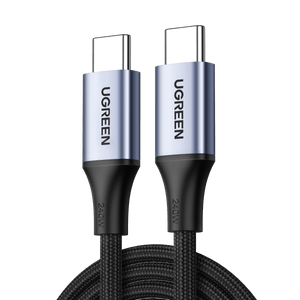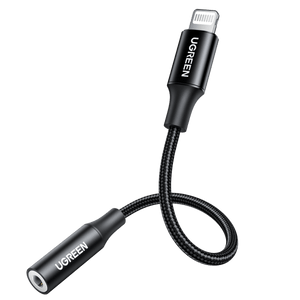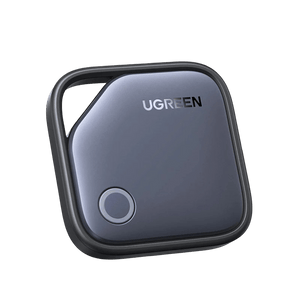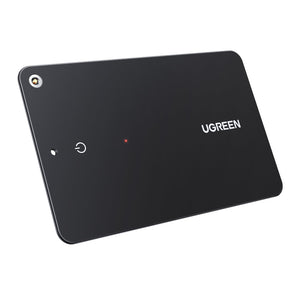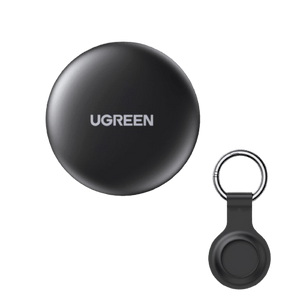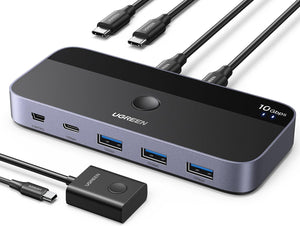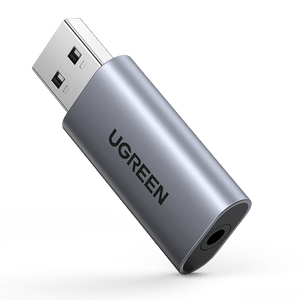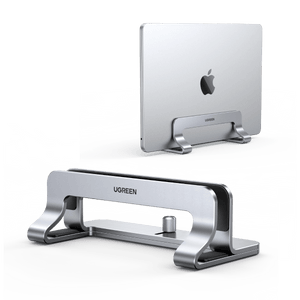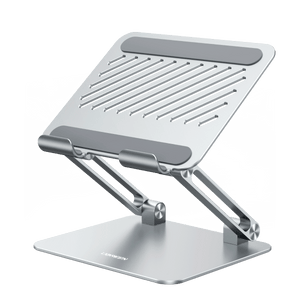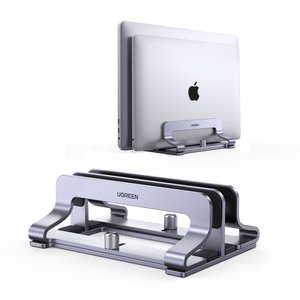The Ultimate Guide to the Types of USB Cables: Connectors and Versions
USB cable are those handy cords that link our devices to power or let us transfer data. You might have noticed there are different types of USB cables. These cables come in various types and versions, making it essential to understand the differences. USB cables are commonly categorized in two ways: by USB connectors and by USB versions.
This article will introduce the types of USB cables from these two classifications, making it easier for you to understand how they work and which ones you need. It’s all about making your tech life simpler!
Common USB Terms You Need to Know
Before we dive into the different types of USB cables, it’s essential to familiarize ourselves with some common USB terminology:
Connector
It’s the physical component that plugs into a port on a device. There are various types of USB connectors to be aware of.
Port
A port is like the socket that your USB cable plugs into on your devices. It’s like the slot where you insert a plug into a wall socket. Different devices have different types of USB cable ports to connect with USB cables.
Type
The USB Type is like the design or shape of the USB connector or port. It determines how the connector fits into the port. These types of USB connectors are made for specific uses.
Version
The USB version refers to the technology used for data transfer through the USB cable. When you have a newer USB version, it typically means you can move data more quickly and may have access to better features.
There are also different types of USB ports and USB plug types you should be aware of to ensure compatibility with your devices. Understanding USB cable types and charger cable types can help you select the right cable for your needs. Furthermore, knowing the types of cords and cable types available can simplify your tech setup significantly. Whether it’s USB Type A, USB Type C, or any other USB types, having knowledge of all USB types and USB cords ensures a smooth experience with your tech devices.
Types of USB Cables Distinguished by Connectors
Now, let’s explore the various types of USB cables distinguished by their connectors.

Image from www.avaccess.com
1.USB Type-C (USB C)
USB Type-C, also known as USB-C, is a highly versatile and popular USB connector. It’s special because it doesn’t matter which way you plug it into your device; it works both ways. USB Type-C can transfer data super quickly and can also carry power to charge your gadgets.
{{UGPRODUCT}}
You’ll find these types of USB cables on many modern laptops, smartphones, and tablets. It’s like a universal plug for all your new devices! Types of USB-C are increasingly common due to their versatility and efficiency. Complementary to the rise in the use of USB Type-C for charging, in the comprehensive guide “How to Charge Your Apple Watch Without a Charger,” innovative solutions leveraging such technologies, among others, are reviewed. It considers how you can tap into the flexibility of USB-C and other smart alternatives to keep your Apple Watch charged, for further explanation of the universal adaptability and convenience of modern charging solutions. Whether you are an Apple enthusiast or just appreciate the concept of universal connectivity, this resource is an important addition to your technological knowledge.
2.Lightning
While the Lightning connector has been a staple of Apple’s ecosystem for years, the landscape is changing. According to UGREEN’s article, the iPhone 16 will continue the transition to USB-C that began with the iPhone 15 series. This shift aligns with broader industry trends and regulatory pressures, particularly from the EU. For Apple users, this means a more universal charging experience across devices, potentially faster charging speeds, and improved data transfer rates. However, it also means that existing Lightning accessories may require adapters or replacements, marking a significant change in Apple’s charging ecosystem.
{{UGPRODUCT}}
3.USB Type-A (USB A)
USB Type-A connectors, those familiar rectangular ports, are everywhere in the tech world. They play a crucial role in linking your computer with a variety of IT gadgets, enabling data transfer according to USB 2.0 standards. USB Type-A connectors are like the classics of USB cables. These USB connector types are commonly found on computers and power adapters.
So, when you plug in your external hard drive or flash drive into your laptop or computer, chances are you’re using a USB Type-A connector. They’re versatile and super handy for connecting various devices to your computer. When exploring types of USB cables, USB Type-A is one of the most widely used and recognizable options.
4.USB Type-B (USB B)
USB Type-B connectors look a bit different. They’re either square or rectangular with beveled corners. You’ll commonly find them in devices like printers, scanners, and some older external hard drives.
What’s interesting is that Type-B connectors come in different sizes - there’s Standard-B, Mini-B, and Micro-B. So, these connectors are specialized for connecting specific types of equipment like your printer or scanner to your computer.
5.Mini USB
Let’s talk about Mini USB. These connectors are smaller than the standard Type-B connectors. They used to be quite common in the past but have become less popular with the arrival of Micro USB and USB Type-C. Nevertheless, you can still spot Mini USB connectors on some older devices and accessories.
6.Micro USB
Now, let’s talk about Micro USB. These connectors are even smaller and more compact than Mini USB. You’ll find them in many older Android smartphones, Bluetooth headphones, and various portable gadgets. However, keep in mind that they are slowly being replaced by the more versatile USB Type-C in newer devices. USB connectors types like Micro USB have been widely used but are now giving way to newer standards.
Types of USB Cables Distinguished by Versions
USB cables can also be categorized by the version of the USB standard they support. Different versions offer varying data transfer speeds and capabilities. Here are the primary USB versions.

Image from https://basic-tutorials.de
1.USB 1.0
The types of USB connections start with USB 1.0. The very first USB standard came onto the scene in 1996. It offered a maximum data transfer rate of 12 megabits per second (Mbps). While this may not seem very fast by today’s standards, it was quite sufficient for basic devices like keyboards and mice, which were the primary focus at the time.
In those early days of USB technology, it was a significant improvement over older connection methods. USB 1.0 made it more convenient to connect and use these simple peripherals with computers, eliminating the need for various types of cables and making the setup process much more straightforward.
2.USB 1.1
Moving on to USB 1.1, which came along in 1998 as an improvement over USB 1.0. It kept the same data transfer rate of 12 Mbps but brought some minor enhancements for better overall performance. Types of USB cables were evolving with these early standards, setting the stage for later advancements in USB technology.
3.USB 2.0
USB 2.0, or Hi-Speed USB, arrived on the scene in 2000, and it was a big deal at the time. It significantly improved data transfer speeds, reaching a maximum rate of 480 megabits per second (Mbps). This might not be as fast as the newer types of USB cables we have today, but it was a huge leap forward compared to the original USB 1.1, which was much slower.
USB 2.0 quickly became the standard for connecting all sorts of devices. It was the go-to choice for linking up external hard drives, flash drives, printers, and a wide range of other gadgets. This increased speed made it much more convenient to move files around, print documents, and access data on external storage devices.
4.USB 3.0
Types of USB cables saw a significant advancement with the introduction of USB 3.0, sometimes called SuperSpeed USB, in 2008. It brought with it lightning-fast data transfer speeds of up to 5 gigabits per second (Gbps). To put it simply, this technology made moving data between devices much quicker, about ten times faster than the older USB 2.0.
This speed boost was a game-changer for various tasks. It allowed for seamless high-definition video streaming, so you could watch your favorite movies and videos without any annoying buffering. Additionally, it made file transfers a breeze.
Whether you were backing up your computer, moving large files, or just copying photos from your camera, USB 3.0 significantly reduced the time you had to wait for these tasks to complete.
5.USB 3.1
USB 3.1, making its debut in 2013, was a game-changer in the USB universe. It delivered lightning-fast data transfers, clocking in at a whopping 10 gigabits per second (Gbps). To put it simply, it could move your data between devices about 20 times faster than the older USB 2.0. But speed wasn’t its only trick. USB 3.1 introduced the nifty USB Type-C connector.
It’s small, reversible, and incredibly versatile. You can plug it in either way, saving you from that frustrating moment when you can’t get your USB to fit. This Type-C connector quickly won over the tech world and is now a common sight on modern devices like laptops, smartphones, and even some headphones.
When considering types of USB cables, USB 3.1 brought a revolution in terms of speed and the introduction of the versatile USB Type-C connector.
6.USB 3.2
When discussing types of USB cables, USB 3.2, which was introduced in 2008, represents a significant leap in data transfer capabilities. It’s like a speed boost for your computer’s connections. It can handle rates of up to 20 Gbps, making it perfect for data-intensive tasks like gaming and video editing. It’s a great choice if you need high-speed connectivity.
7.USB 4
USB 4, the newest member of the types of USB cables family, was introduced in 2019. This one is a speed demon, offering data transfer speeds of up to 40 Gbps. It’s not just fast; it’s also packed with high-end features like Thunderbolt 3.
You can find USB 4 in many modern laptops and desktop computers, providing lightning-fast data transfer and top-notch connectivity. It’s the go-to choice for those who demand the best speeds and performance.
Understanding the types of USB connectors and types of USB connections can help you choose the right cable for your needs. Different devices and applications require different USB connector types and USB cord types. Whether it’s charging your phone or transferring data, knowing the right charging cable types and USB ports types is essential. By familiarizing yourself with the various USB cables types, you can ensure compatibility and optimal performance for all your tech gadgets.
What Are the Differences Between USB Versions?
Here is a detailed comparison of types of USB cable versions.
| USB Version | Also Known As | Year Introduced | Connector Types | Max. Data Transfer Speed | Cable Length | Can Support Video? | Can Support Power Delivery |
|---|---|---|---|---|---|---|---|
| USB 1.0 | USB 1.0 | 1996 | USB-A, USB-B | 1.5 Mbit/s (Low Speed) 12 Mbit/s (Full Speed) | 3m | No | No |
| USB 1.1 | Full-Speed USB | 1998 | USB-A, USB-B | 1.5 Mbit/s (Low Speed) 12 Mbit/s (Full Speed) | 3m | No | No |
| USB 2.0 | Hi-Speed USB | 2000 | USB-A, USB-B, USB Micro A, USB Micro B, USB Mini A, USB Mini B, USB-C* | 1.5 Mbit/s (Low Speed) 12 Mbit/s (Full Speed) 480 Mbit/s (High Speed) | 5m | No | Yes |
| USB 3.0 | SuperSpeed | 2008 | USB-A, USB-C | 5 Gbit/s (SuperSpeed) | 18m | Yes | Yes |
| USB 3.1 | SuperSpeed+ | 2013 | USB-C | 10 Gbit/s (SuperSpeed+) | 18m | Yes | Yes |
| USB 3.2 Gen 1 | USB 3.0, USB 3.1 Gen 1, SuperSpeed | 2008 (USB 3.0), 2013 (USB 3.1) | USB-A, USB-B, USB Micro B, USB-C* | 5 Gbps | 3m | No | No |
| USB 3.2 Gen 2 | USB 3.1, USB 3.1 Gen 2, SuperSpeed +, SuperSpeed 10Gbps | 2013 (USB 3.1) | USB-A, USB-B, USB Micro B, USB-C* | 10 Gbps | 3m | No | No |
| USB 3.2 Gen 2×2 | USB 3.2, SuperSpeed 20Gbps | 2017 | USB-C* | 20 Gbps | 3m | Yes | Yes |
| USB 4 | USB4 Gen 2×2 20Gbps | 2019 | USB-C* | 20 Gbps | 0.8m | Yes | Yes |
| USB 4 | USB4 Gen 3×2 40Gbps | 2019 | USB-C* | 40 Gbps (SuperSpeed+ and Thunderbolt 3) | 0.8m | Yes | Yes |
FAQs About Types of USB Cables
Hop on below to have a look at answers to some of the most Frequently Asked Questions (FAQs)!
1.How to Tell If USB Cables Support Fast Charging?
To determine if a USB cable supports fast charging, check its voltage and current output. Fast chargers typically output at 5V, 9V, 12V, or higher, and current ratings of 2000mA or more.
Look for cables with specifications like 5V-2A or 5V-2000mA for fast charging compatibility, while anything below 1000mAh is considered a slow charger. Additionally, check for labels like “Fast Charge,” “Quick Charge,” or “PD” (Power Delivery) on the cable itself. Knowing how to tell if a USB cable supports fast charging is important. But for those seeking a new approach, wireless charging is a solution. To learn more about choosing between wireless and wired charging, check out our article “Choose Wireless or Wired Charging.”
2.How Do I Know Which Version of USB Cable I am Using?
To figure out which USB version you’re using, take a look at the color of the inside part of the connector. If it’s white, it’s USB 1.0; black means it’s USB 2.0, and a blue color indicates it’s a USB 3.0 port. This simple visual cue helps you identify your USB cable’s version.
3.Can Devices with Different USB Versions Be Used Together?
Yes, devices with different types of USB cable versions can be used together. USB cables and ports are typically backward compatible, allowing older devices to connect to newer ports. However, the performance is limited to the lowest USB version involved in the connection. For example, using a USB 3.0 cable with a USB 2.0 device will operate at USB 2.0 speeds.
4.Can I Use a 3.0 USB Cable with a 2.0 Device?
Hear us shouting YES! You can use a 3.0 USB cable with a 2.0 device because each 3.0 cable is backward compatible with these devices. But keep in mind the connection will be established in plug and play manner, and it will provide data transfer speed up to the standards of USB 2.0 only.
5.What Does Backward Compatible Mean?
This concept means the latest version of something can still be used with previous versions, like the USB A 3.0 port and USB A 2.0 peripheral. The same is the case of the newer USB C, but it needs an additional adaptor or USB cable to establish a connection due to differences in port styles.
Note one thing: when utilizing the previous version, you will obtain performance according to the earliest version. For instance, if you plan on transferring files from a 2.0 USB A enabled hard drive to a laptop featuring USB A 3.0 ports, the transfer rate would be limited to 480Mbps.





